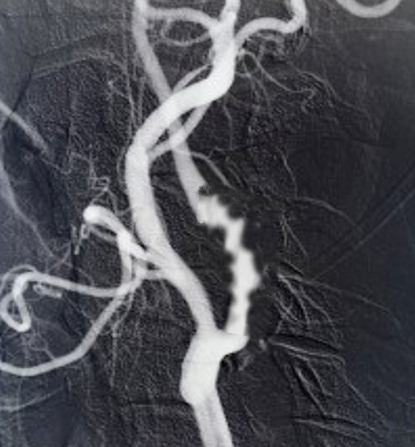[1]
Olin JW, Sealove BA. Diagnosis, management, and future developments of fibromuscular dysplasia. Journal of vascular surgery. 2011 Mar:53(3):826-36.e1. doi: 10.1016/j.jvs.2010.10.066. Epub 2011 Jan 13
[PubMed PMID: 21236620]
[2]
Kadian-Dodov D, Gornik HL, Gu X, Froehlich J, Bacharach JM, Chi YW, Gray BH, Jaff MR, Kim ES, Mace P, Sharma A, Kline-Rogers E, White C, Olin JW. Dissection and Aneurysm in Patients With Fibromuscular Dysplasia: Findings From the U.S. Registry for FMD. Journal of the American College of Cardiology. 2016 Jul 12:68(2):176-85. doi: 10.1016/j.jacc.2016.04.044. Epub
[PubMed PMID: 27386771]
[3]
Olin JW, Froehlich J, Gu X, Bacharach JM, Eagle K, Gray BH, Jaff MR, Kim ES, Mace P, Matsumoto AH, McBane RD, Kline-Rogers E, White CJ, Gornik HL. The United States Registry for Fibromuscular Dysplasia: results in the first 447 patients. Circulation. 2012 Jun 26:125(25):3182-90. doi: 10.1161/CIRCULATIONAHA.112.091223. Epub 2012 May 21
[PubMed PMID: 22615343]
[4]
Kim ESH, Olin JW, Froehlich JB, Gu X, Bacharach JM, Gray BH, Jaff MR, Katzen BT, Kline-Rogers E, Mace PD, Matsumoto AH, McBane RD, White CJ, Gornik HL. Clinical manifestations of fibromuscular dysplasia vary by patient sex: a report of the United States registry for fibromuscular dysplasia. Journal of the American College of Cardiology. 2013 Nov 19:62(21):2026-2028. doi: 10.1016/j.jacc.2013.07.038. Epub 2013 Aug 14
[PubMed PMID: 23954333]
[5]
McInnis CP, Haynor DR, Francis CE. Horner syndrome in fibromuscular dysplasia without carotid dissection. Canadian journal of ophthalmology. Journal canadien d'ophtalmologie. 2016 Apr:51(2):e53-5. doi: 10.1016/j.jcjo.2015.10.019. Epub
[PubMed PMID: 27085276]
[6]
Mettinger KL, Ericson K. Fibromuscular dysplasia and the brain. I. Observations on angiographic, clinical and genetic characteristics. Stroke. 1982 Jan-Feb:13(1):46-52
[PubMed PMID: 7064180]
[7]
Sharma AM,Kline B, The United States registry for fibromuscular dysplasia: new findings and breaking myths. Techniques in vascular and interventional radiology. 2014 Dec
[PubMed PMID: 25770640]
[8]
Müller BT, Luther B, Hort W, Neumann-Haefelin T, Aulich A, Sandmann W. Surgical treatment of 50 carotid dissections: indications and results. Journal of vascular surgery. 2000 May:31(5):980-8
[PubMed PMID: 10805889]
[9]
Harriott AM, Zimmerman E, Singhal AB, Jaff MR, Lindsay ME, Rordorf GA. Cerebrovascular fibromuscular dysplasia: The MGH cohort and literature review. Neurology. Clinical practice. 2017 Jun:7(3):225-236. doi: 10.1212/CPJ.0000000000000339. Epub
[PubMed PMID: 28680766]

